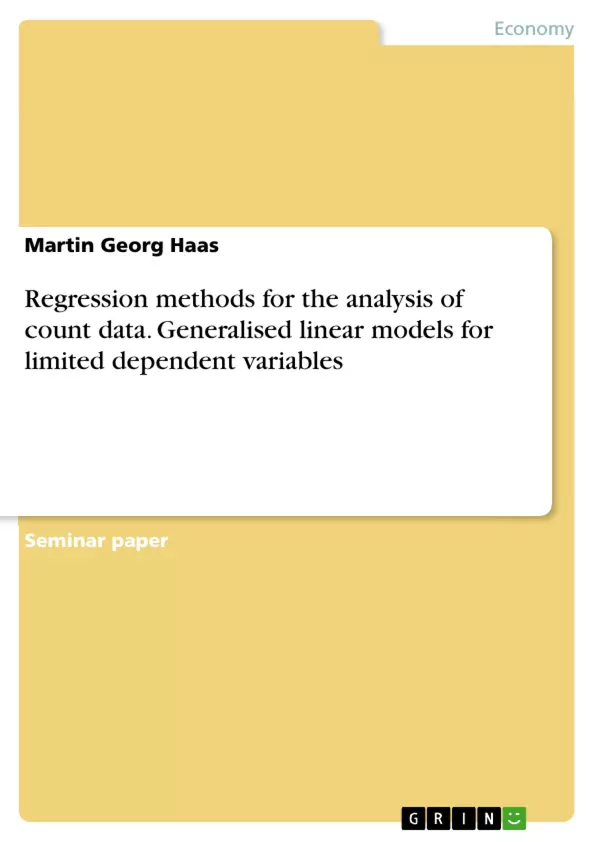This paper assesses the application of regression methods to analyse count data. R-Code and Data are available from the author!
While the common multiple regression method has a wide range of applicability, and can be accommodated to various different kinds of regressor variables, its application is limited to the modelling of response variables from the space of real numbers. For the analysis of other kinds of responses, such as counts, a more generalised set of tools is needed. This toolset is given by the generalised linear model framework and maximum likelihood estimation.
For the specific purpose of this paper, the count data analysis methods of Poisson, Negative-Binomial, Hurdle and Zero-Inflation models are considered. This paper explains their theoretical background and applies them to a unique dataset that motivates their respective use. It is structured as follows: section 2 describes the applied dataset and section 3 the generalised linear model framework. In section 4 and section 5 the basic count data models and their results are discussed, while section 6 and section 7 explain the more advanced methods and their results. section 8 concludes.
Inhaltsverzeichnis (Table of Contents)
- Introduction
- Data
- Generalised Linear Model Framework
- Count Data Models I
- The Poisson Regression
- The Negative Binomial Regression
- Quasi-Poisson
- Estimation Results I
- Standard Errors
Zielsetzung und Themenschwerpunkte (Objectives and Key Themes)
This seminar paper explores the application of regression methods for analyzing count data. It focuses on the limitations of the traditional multiple regression model when dealing with responses that are limited to positive integers, such as counts. The paper introduces the generalized linear model (GLM) framework and maximum likelihood estimation as a more versatile tool for handling count data.
- Count Data Analysis
- Generalised Linear Model Framework
- Maximum Likelihood Estimation
- Poisson Regression
- Negative Binomial Regression
Zusammenfassung der Kapitel (Chapter Summaries)
- Introduction: This section introduces the topic of count data analysis and the limitations of traditional multiple regression methods for modeling such data. It highlights the need for a more generalized framework, such as the GLM framework.
- Data: This section describes the dataset used in the analysis, which focuses on recreational boating trips on Lake Somerville, Texas. It provides summary statistics for the variables of interest, including the number of boat trips, individual characteristics, and expenditure.
- Generalised Linear Model Framework: This section explains the concept of the generalized linear model (GLM) and its flexibility in modeling various distributions beyond the normal distribution. It describes the key components of the GLM framework, including the linear predictor, link function, and maximum likelihood estimation.
- Count Data Models I: This section introduces three core models for analyzing count data: the Poisson regression, the negative binomial regression, and the quasi-Poisson model. It explains the theoretical background, assumptions, and differences between these models.
- Estimation Results I: This section presents the results of the maximum likelihood estimation of the Poisson and negative binomial models. It interprets the parameter estimates, discusses the significance of different variables, and compares the model performance.
- Standard Errors: This section examines different methods for calculating standard errors, including the inverse of the Hessian matrix, bootstrap simulation, and sandwich estimator. It discusses the advantages and disadvantages of each method and highlights the importance of robust standard errors in the context of count data analysis.
Schlüsselwörter (Keywords)
This paper focuses on the application of generalized linear models to analyze count data. It explores various models including Poisson, Negative Binomial, Hurdle, and Zero-Inflation models. The key concepts include maximum likelihood estimation, limited dependent variables, regression, and estimation.
- Arbeit zitieren
- Martin Georg Haas (Autor:in), 2019, Regression methods for the analysis of count data. Generalised linear models for limited dependent variables, München, GRIN Verlag, https://www.hausarbeiten.de/document/1003006


